A Writing Cheat Sheet: For Linking Actions With Emotions.
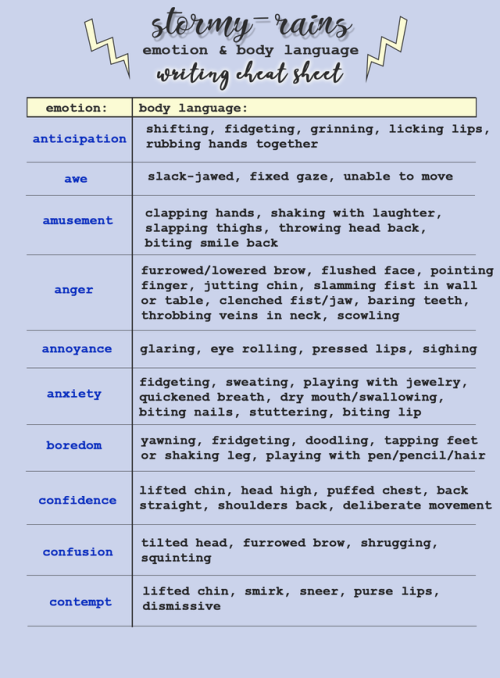
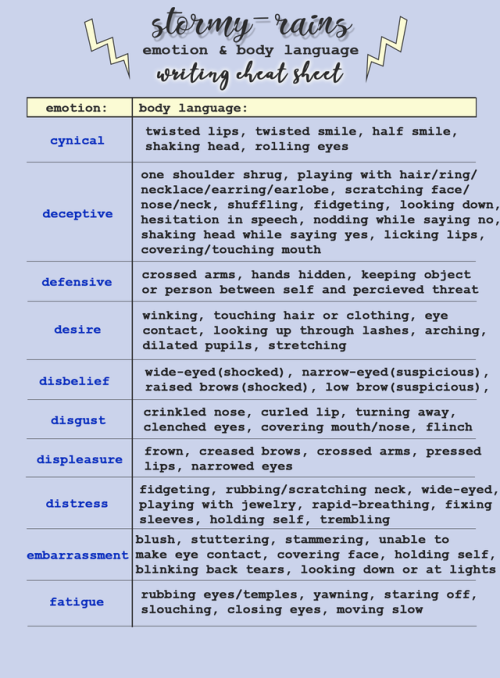

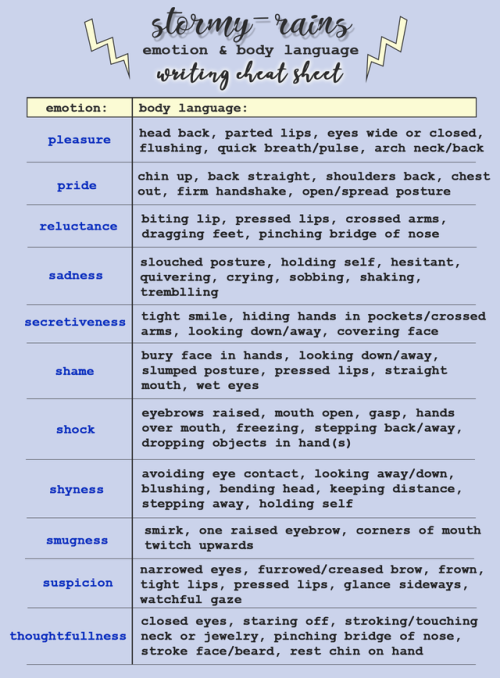
A Writing Cheat Sheet: for linking actions with emotions.
As always, click for HD.
More Posts from Thejunkdrawers and Others
Have you heard about mole genders?










I’ve heard of this concept in sci-fi, but thought it was absolutely made up. I know some fish and frogs can change genders, but not in cycles like this. Wild. If I slapped this down in some alien world without explanation, I’d laugh in my own face. But no, real biology IS that bizarre.
Image descriptions:
Keep reading
Hanfu in Components: Structure Conventions (pt2)
navigation: hanfu in components 1 2 3.1 3.2 ...
Thanks for the love on the last post, I’ve been motivated to continue writing LOL Anyway: Construction/sewing pattern/structure is very important to hanfu!
There are a few important structure conventions when it comes to hanfu—almost all traditional-cut hanfu follow these rules; you could call them the defining characteristics of hanfu. There are exceptions to every rule of course (I will go over some caveats at the end of this post), but generally if a hanfu design ignores these rules we might consider it to be ‘incorrect.'
(There will be a longer follow-up pt. 3 post to this explaining the anatomy of a hanfu top/robe, where there will be more detailed in-context illustrations and descriptions. I just figured I should list these ‘rules’ somewhere separately.)
中縫/中缝/zhong1 feng4/Center Seam


Take a look at your shirts. Is there a shoulder seam between the front of the shirt and the back of the shirt? Western clothing tends to consist of a front piece + back piece sewn together to create a space for your body to sit in:

Hanfu doesn’t work like that. Traditionally, the garment isn’t separated into a front piece and back piece: it’s separated into a right piece and left piece, which are joined together at the vertical center seam. Why? Traditional fabric has a narrower width than the standard ~145cm that we have today, so a long, narrow piece is less wasteful to cut out from a bolt of silk than a wide one.

Therefore there is always a center seam, one running vertically down the front and one down the back. 中 = center, 縫 = seam, so 中縫 means center seam. There’ll be a front center seam (前中縫) and a back center seam (後中縫).


不破肩/不破肩/bu2 po4 jian1/No Broken Shoulder
Kind of an addendum onto the previous point? Additionally since the body pieces are separated into left/right rather front/back, there’s no seam at the top of the shoulder here. The fabric is simply draped over the arm/shoulder to hang down, covering the torso on both sides.*


*Caveat: Some modified hanfu that vendors sell today will have a shoulder seam, especially thicker winter garments or short-sleeved garments. This is a design choice made to prevent the fabric from looking too stiff, known as 破肩/破肩/po4 jian1,literally “broken shoulder.” It can look great, lots of hanfu makers do it! But just to be clear, that is a MODIFICATION.
接袖/接袖/jie1 xiu4/Sleeve Connection


Western clothing patterns tend to have something where the fabric of the sleeve gets connected to the fabric of the garment’s body at the shoulder/armpit, often with a concave arm hole shape to help with the contours of the garment when it’s worn.

Hanfu sleeves, on the other hand, are never connected at the armpit—they are connected halfway down the arm. In other words, the piece of fabric that forms the body extends to also cover the upper arm part of the sleeve. The actual sleeve piece is connected to the body at the bicep/elbow area via a flat seam. (In the case of half- or no- sleeve garments there might just not be a separate sleeve piece.)


右衽/右衽/you4 ren4/"Right Over Left" Rule


Applies to cross-collar, some varieties of round collar, and some varieties of standing collar tops. In the case that the front of the garment crosses over itself, the flap coming from the wearer’s left goes OVER the flap coming from the wearer’s right. Easiest way to make sense of this is, if you’re looking at someone wearing a cross-collar hanfu top, the cross will look like a lowercase y.


Caveats
NO RULE EXISTS WITHOUT EXCEPTION!!! These rules exist because a majority of hanfu follow them and they are a standard that people agree on right now. However, there are ALWAYS cases—historically or otherwise—where these rules may be broken. For example, there are several Ming Dynasty cross collar robes that happen to be left over right, and the location of the sleeve seam can differ based on what garment you're looking at.
Also, many modern hanfu manufacturers will deliberately choose to break these 'rules' in favor of aesthetics. This is a purposeful design choice—not one that's done out of ignorance or disrespect. It's easy for common modifications to get mistaken for 'historically accurate.' To be clear, it is 100% okay and super common for modifications to exist! Just don't go around claiming that it was historically that way.
My advice is that if you're starting out with hanfu, try to stick to these rules in the back of your head as closely as possible. Once you've built your foundational knowledge, then you can start exploring the exceptions to the rules. These rules may not be foolproof, but they are a useful tool to help you understand the commonalities and trends within hanfu without overwhelming you.
Last note: it is generally more of a taboo for seams that should exist to not exist in a piece of clothing (i.e. no center back seam) than for extra seams to exist. If you go look in museums for the artifacts that hanfu is based off of, you'll notice that a lot of them—especially the ones from earlier dynasties—are a chaotic patchwork of a bunch of random piece of fabric sewn together to create the garment. Fabric is expensive, people don't want to waste it! So it's not all that weird to have seams in random places.
Happy 除夕 everyone! 有蛇有得 :>
navigation: hanfu in components 1 2 3.1 3.2 ...
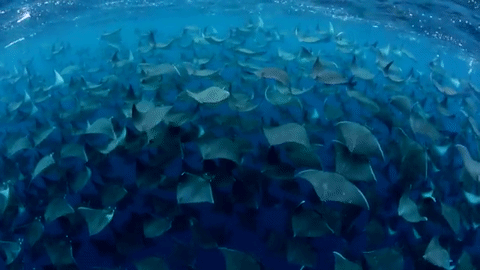



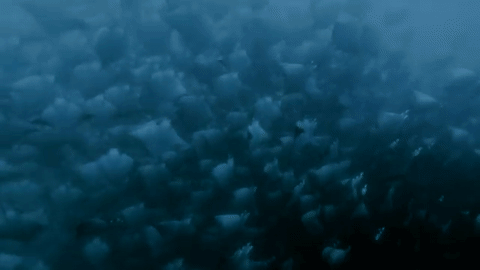

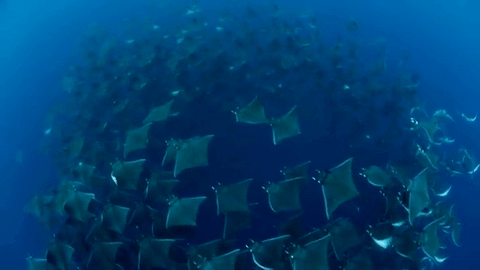

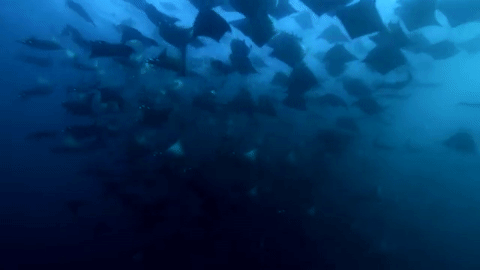
closely related to sharks but with long, flat bodies and wing-like pectoral fins, mobula rays are ideally suited to swooping through the water - here off the gulf of california - yet seem equally at home in the air, so much so that they have earned the name “flying rays”. mobula rays can reach heights of more than two metres, remaining airborne for several seconds.
mobula rays are quite elusive and difficult to study, so biologists are not quite sure why they jump out of the water. theories vary from a means of communication, to a mating ritual (though both males and females jump), or as a way to shed themselves of parasites. they could also be jumping as a way of better corralling their pray, as seen with them swimming in a circular formation.
what is known about mobula rays is that they reach sexual maturity late and their investment in their offspring is more akin to mammals than other fishes, usually producing just a single pup after long pregnancies, all of which makes them extremely vulnerable to commercial fishing, especially as a species that likes to come together in large groups.
From the book Organizing Solutions for People with ADHD:
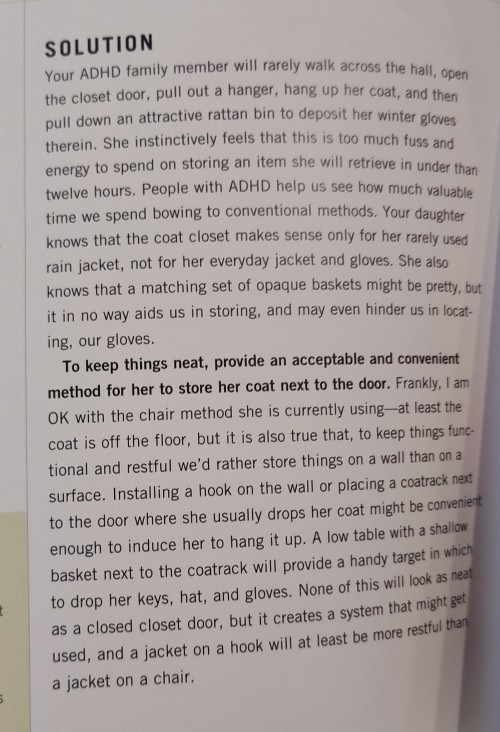

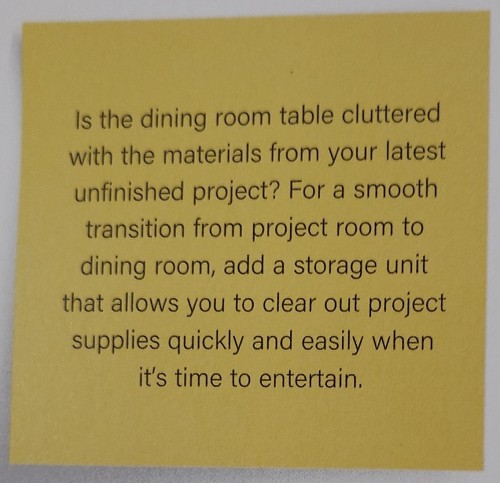



Putting a coat on the back of a chair by the door is fine, but if you prefer, use coat hooks and a large catch-all basket for dropping keys, hats, gloves.
Small bookcase end-table next to the couch to store craft projects, books, and other things being worked on for easy access.
Add a storage unit near the dining room table to transition between eating and working there.
Daily toiletry items should be stored in a basket that you can move easily
Extra toiletries and medicine cabinet items go in open shelf/basket storage so they can be seen and used easily. If items no longer fit, purge the excess. Don’t obscure the view!
If you disrobe in the bathroom, place a tall hamper in there.
Keep a set of cleaning supplies in each bathroom

I've been reading through your blog and you're doing an amazing job at sharing diy and fixing tutorials. I had a question on weather or not you had anything on thigh bags? Or removable pockets, generally storage spaces to that aren't a backpack or a cross bag
Bags, pockets, and alternative storage
You've got a few options if you don't like backpacks or cross bags. This post is not exhaustive, just a few ideas you could try.
Hip and thigh bags:
Your back or torso might be a convenient place to keep a bag, but it's not everyone's cup of tea. Another spot that's pretty handy is your hip or thigh.
Free hip bag pattern (Stylin' Stacy)
How to turn thrifted purse into hip/thigh bag (Instructables)
Purse to clip-on belt/hip bag (EPBOT)
Free belt bag pattern (Melly Sews)
How to turn clutch into belt bag (Brit+co)
Free zippered belt bag pattern (Sew4Home)

(Image source) [ID: a person wearing a brown leather bag that's been clipped onto the belt loops of the wearer's jeans. Text: "EPBOT".]
Fanny packs:
Fanny packs are also an option: you can wear them both around your waist or across your body.
Fanny pack tutorial (Gathered)
Easy fanny pack tutorial (Sewing Times)
Free fanny pack pattern (Spoonflower)
Fanny pack video tutorial (Madam Sew)

(Image source) [ID: a fanny pack made out of a dark green fabric with white leaves and yellow leopards lies on a green background. A pair of sunglasses and a hair clip lie next to it.]
Removable pockets:
Aside from adding pockets to your clothes or enlarging existing pockets, you can also use tie-on pockets. They were commonly used in the 17th-19th century, either hidden between petticoats or worn on top of a skirt. Worth a try if you wear a lot of wrap skirts or pants!
Make your own tie-on pocket (V&A Museum)
Tie-on pocket moodboard (Pinterest)
Tie-on pockets (Bernadette Banner)

(Image source) [ID: close-up on a large tie-on pocket made out of a white fabric with red details, worn over a red and white striped petticoat and faint purple stays.]
Cargo pants:
If bags aren't your thing, there's always cargo pants! They're a type of pants covered in pockets. If you can't find any cargo pants, you can always make your own by sewing external pockets onto a pair of trousers. Make sure to use fabric that's strong enough to handle the weight of whatever you plan on putting in there.
Draft your own cargo pants pattern (Shwin & Shwin)
Add cargo pockets to pants (Sew Guide)
Cargo pants self-draft pattern (Marlene Mukai)
Add cargo pockets to pants (Sewing Mamas)

(Image source) [ID: close-up of the legs of a person wearing denim cargo pants. An external pocket with a button closure has been sewn to the side of each leg.]
Explaining acá and ahí would be a lot easier if English still used “hither” and “thither”.
Like aquí is “here”, and acá is “hither”. Where “hither” means “over here” or “closer”; different from “here” which is an actual place, while “hither” is a direction.
And allí is “there” but ahí can be “thither” which is “towards that place” or “over there” like you’re pointing.
And allá is “all the way over there” or “yon(d)” or “yonder”.
If you study Spanish long enough you’ll understand “Olde” English a whole lot more because they weren’t as different once upon a time.
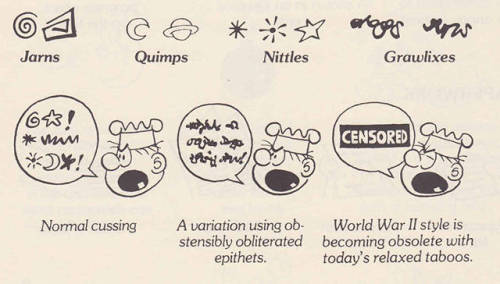
So it occurred to me that ‘grawlix’ is sort of an obscure and specialized word, but what I didn’t know until I was googling around just now is that it was actually invented by cartoonist Mort Walker in his 1980 book The Lexicon of Comicana, in which he categorizes (and invents terminology for) all kinds of visual cues and shorthand commonly used in comics


In other news, this is now right up there with The Meaning of Liff as ‘books of made up words I desperately need to own”
-
 lovelight-magic liked this · 2 weeks ago
lovelight-magic liked this · 2 weeks ago -
 solysal liked this · 4 weeks ago
solysal liked this · 4 weeks ago -
 craftytrashnightmare liked this · 1 month ago
craftytrashnightmare liked this · 1 month ago -
 keeper-of-gates liked this · 1 month ago
keeper-of-gates liked this · 1 month ago -
 starlantern reblogged this · 1 month ago
starlantern reblogged this · 1 month ago -
 riverdancethemusical liked this · 1 month ago
riverdancethemusical liked this · 1 month ago -
 kasmie liked this · 2 months ago
kasmie liked this · 2 months ago -
 writeshine reblogged this · 2 months ago
writeshine reblogged this · 2 months ago -
 thejunkdrawers reblogged this · 2 months ago
thejunkdrawers reblogged this · 2 months ago -
 hooligansconglomerateee reblogged this · 2 months ago
hooligansconglomerateee reblogged this · 2 months ago -
 newdawnhorizon reblogged this · 2 months ago
newdawnhorizon reblogged this · 2 months ago -
 orreyn reblogged this · 2 months ago
orreyn reblogged this · 2 months ago -
 orreyn liked this · 2 months ago
orreyn liked this · 2 months ago -
 solmxri liked this · 2 months ago
solmxri liked this · 2 months ago -
 starsboiling-051121 liked this · 3 months ago
starsboiling-051121 liked this · 3 months ago -
 ellie260702 liked this · 3 months ago
ellie260702 liked this · 3 months ago -
 xmasberries reblogged this · 3 months ago
xmasberries reblogged this · 3 months ago -
 acookiedragonblog reblogged this · 3 months ago
acookiedragonblog reblogged this · 3 months ago -
 jacyteh liked this · 3 months ago
jacyteh liked this · 3 months ago -
 chrispersonalcorner reblogged this · 4 months ago
chrispersonalcorner reblogged this · 4 months ago -
 dslsherlock reblogged this · 4 months ago
dslsherlock reblogged this · 4 months ago -
 benicchiis reblogged this · 4 months ago
benicchiis reblogged this · 4 months ago -
 elektrathe100 reblogged this · 4 months ago
elektrathe100 reblogged this · 4 months ago -
 rie-anessia liked this · 4 months ago
rie-anessia liked this · 4 months ago -
 urara04 liked this · 6 months ago
urara04 liked this · 6 months ago -
 ledesaid liked this · 6 months ago
ledesaid liked this · 6 months ago -
 tc-lp liked this · 6 months ago
tc-lp liked this · 6 months ago -
 smaragdbird reblogged this · 6 months ago
smaragdbird reblogged this · 6 months ago -
 eyeyandastand liked this · 6 months ago
eyeyandastand liked this · 6 months ago -
 popeurban reblogged this · 7 months ago
popeurban reblogged this · 7 months ago -
 8k26 liked this · 7 months ago
8k26 liked this · 7 months ago -
 jayzusrpwithme reblogged this · 7 months ago
jayzusrpwithme reblogged this · 7 months ago -
 toast-masterr liked this · 7 months ago
toast-masterr liked this · 7 months ago -
 randomhelpfulstuffforlife reblogged this · 7 months ago
randomhelpfulstuffforlife reblogged this · 7 months ago -
 mikeistrulydoomed liked this · 7 months ago
mikeistrulydoomed liked this · 7 months ago -
 my-inkwings liked this · 7 months ago
my-inkwings liked this · 7 months ago -
 wordywonders reblogged this · 7 months ago
wordywonders reblogged this · 7 months ago -
 chewbaxter reblogged this · 8 months ago
chewbaxter reblogged this · 8 months ago -
 kayayayayayayay liked this · 8 months ago
kayayayayayayay liked this · 8 months ago -
 smallme liked this · 8 months ago
smallme liked this · 8 months ago -
 animeschibia reblogged this · 8 months ago
animeschibia reblogged this · 8 months ago

A side blog where I'll *try* to keep things organised.yeahthatsnotgoingtolastlong
241 posts

